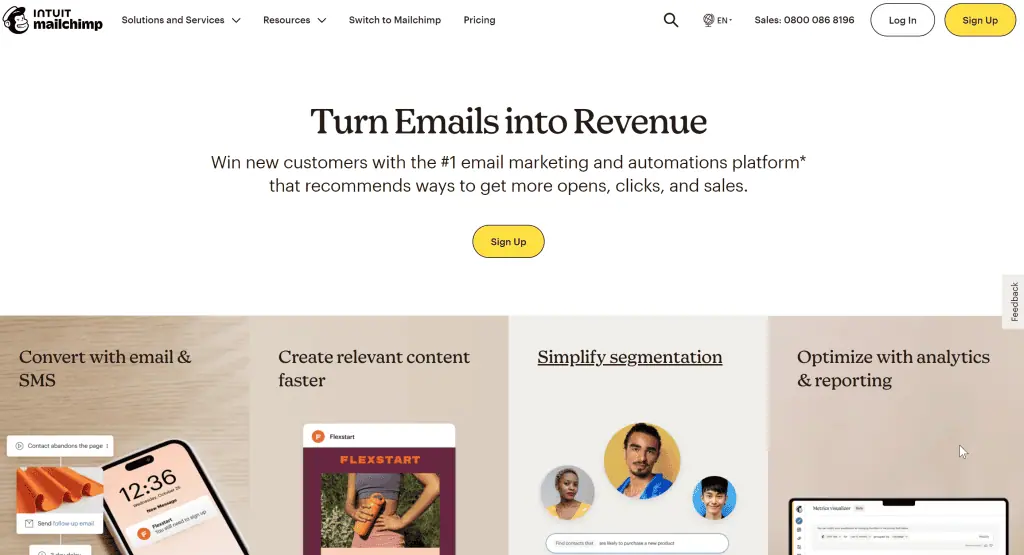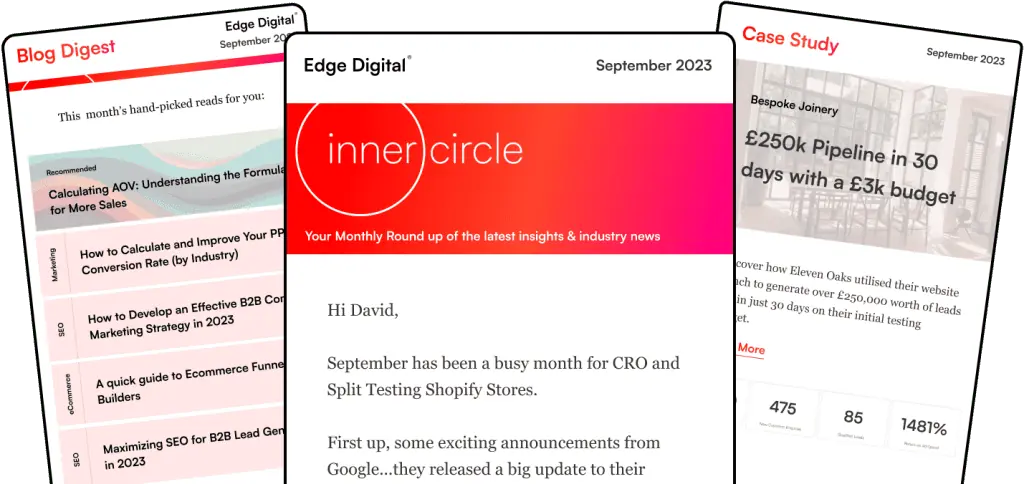Did you know that marketing automation can revolutionize your marketing efforts and elevate your brand’s success to new heights? From nurturing leads to personalizing customer experiences, it’s a game-changing tool. In this blog post, we’ll explore the ins and outs of crafting an effective marketing automation strategy that drives revenue growth and fosters customer loyalty.
Key Takeaways
- Marketing Automation enables businesses to save time and foster customer loyalty.
- Developing a successful strategy requires setting goals, identifying target audiences, utilizing automation tools & measuring KPIs for optimization.
- Real life examples show how personalized content and timely communication can lead to increased revenue growth & customer loyalty.

Understanding the Role of Marketing Automation
Imagine a world where repetitive marketing tasks are seamlessly taken care of, allowing you to focus on more strategic initiatives like social media marketing. Welcome to the realm of marketing automation! Marketing automation employs marketing automation software to efficiently manage repetitive tasks like automated marketing campaigns, email campaigns, and social media posting, thereby saving time and boosting customer engagement.
This powerful tool fosters and cultivates customer relationships by nurturing leads, guiding them through the sales funnel, and ultimately driving revenue growth. Marketing automation excels in providing personalized experiences through the automation of tasks such as drip email campaigns and social media postings. The results? Improved customer experience and a stronger bottom line.
Definition and purpose of marketing automation
Marketing automation is the use of software that automates repetitive marketing tasks, thereby maximizing time efficiency. Its primary objective is fostering customer loyalty by prompting subsequent purchases. A common example of marketing automation is the email lead nurture sequence, where a prewritten series of emails is sent to a prospect upon downloading an ebook.
The benefits of marketing automation are numerous, including time-saving, enhanced customer engagement, and a tailored experience for customers. The automation of repetitive tasks enables marketing teams to concentrate on strategic initiatives and deliver a more personalized customer experience.
Benefits of marketing automation
The benefits of marketing automation are:
- Streamlines repetitive tasks, saving precious time for your marketing team
- Delivers a personalized experience to customers
- Results in improved customer engagement
- Leads to higher conversion rates
Segmented email marketing and remarketing ads exemplify the power of marketing automation in action. By dividing your email list into smaller groups based on audience attributes, you can send highly relevant content to each segment, boosting engagement and conversions. Remarketing ads target individuals already familiar with your brand, driving them back to your website and enhancing the buyer’s journey.
Developing Your Marketing Automation Strategy
A successful marketing automation strategy is a well-planned roadmap that aligns with the customer journey and maximizes the return on investment for marketing initiatives. To create a robust marketing strategy, follow these steps:
- Set precise goals and objectives.
- Identify target audience segments.
- Make use of automation tools to ensure the right message reaches the right audience at the right time.
By following these steps, you can use marketing automation to create an effective marketing automation strategy that drives results.
To develop a comprehensive marketing automation strategy, start by gathering data related to your audience, competitors, and market. Next, create a customer journey map that outlines the progression of steps taken by a customer from discovering your brand to becoming a loyal customer. This map will serve as the foundation for your marketing automation strategy, ensuring that your marketing efforts are aligned with each stage of the customer lifecycle.
Setting goals and objectives
Establishing clear goals and objectives is the first step in constructing a solid marketing automation strategy. Setting explicit goals helps to identify which tasks should be automated and provides a framework for evaluating success, whether that’s generating leads, boosting brand awareness, or improving customer retention.
One example of leveraging marketing automation to address issues in the customer journey is a company that maps their customer journey and discovers that customers typically become aware of their free course via an online search. By auditing the free course to identify areas of improvement and sending emails to encourage users to complete the free course, the company can optimize the customer journey.
Identifying target audience segments
Identifying target audience segments is crucial for delivering more personalized and relevant content, which in turn improves engagement and conversion rates. Audience segmentation can be achieved through methods like marketing segmentation, behavior-based segmentation, and market segmentation.
Recognizing automation trigger points is also imperative, as it helps ascertain when to initiate automated processes. Examples of triggers for automated processes include manual triggers, like a social media manager initiating an automated ad sequence, and automatic triggers, such as a customer downloading an ebook and subsequently being entered into an email nurture sequence.
Choosing the Right Marketing Automation Tools
Selecting the right marketing automation tools is critical to the success of your marketing automation strategy. When choosing the ideal tools, factors such as:
- Features
- Functionality
- Ease of use
- Cost
should be taken into account.
Choosing the appropriate marketing automation tools allows you to:
- Customize content for different stages of the customer journey
- Establish automated processes for timely content delivery
- Ensure maximum return on investment for your marketing efforts.
Factors to consider when selecting tools
When selecting marketing automation tools, consider the level of automation required, integration with existing systems, and user-friendliness. User-friendliness is key, as it ensures that the software is intuitive, responsive, and easy to use, resulting in increased acceptance and adoption within your organization.
Moreover, integrating existing systems with your marketing automation tool can facilitate the efficient flow of data and communication between different systems, allowing the tool to access and utilize data from other systems such as CRM, email marketing, and customer support.
Popular marketing automation platforms
Popular marketing automation platforms, like HubSpot, Pardot, ActiveCampaign, and MailChimp, are examples of how a marketing automation platform can streamline and optimize various marketing tasks using marketing software.
offer a variety of features and capabilities tailored to different business needs. HubSpot, for instance, provides features such as workflows to trigger sales activity, integration with outside applications, and customizable automation features.
Pricing structures for these platforms vary, with MailChimp offering a range of plans starting with a free option for up to 500 contacts and 1000 emails per month, and ActiveCampaign pricing based on the number of contacts, starting at $9 per month for 500 contacts. Choose the platform that best aligns with your business needs and budget.

Implementing Marketing Automation Workflows
Implementing marketing automation workflows involves creating tailored content for different stages of the customer journey and setting up automated processes to deliver that content at the right time. This is how marketing automation works: by automating workflows, it allows brands to dispatch timely and targeted messages to their target audience, thereby enhancing the customer experience and promoting engagement.
From lead nurturing to customer onboarding, marketing automation workflows allow you to deliver the right message at the right time, ensuring a personalized experience for your customers.
Types of marketing automation workflows
There are various types of marketing automation workflows, each serving a specific purpose within your marketing strategy. Lead nurturing workflows, for example, are designed to foster relationships with leads and guide them through the marketing funnel by delivering personalized content based on their preferences and behaviors.
Other examples of marketing automation workflows include:
- Customer onboarding
- Abandoned cart recovery
- Upselling/cross-selling
- Win-back campaigns
These workflows help streamline marketing processes and ensure that you’re delivering the right message at the right time to your target audience.
Best practices for workflow implementation
For maximum impact from your marketing automation workflows, you should adhere to best practices like content personalization, audience segmentation, and testing different approaches for result optimization. Personalizing content ensures that your campaigns resonate with your audience and result in higher conversion rates.
Additionally, segmenting audiences allows you to:
- Deliver relevant and personalized content to each segment
- Enhance engagement and boost conversions
- Test different approaches to discover which content resonates with your audience
- Optimize your campaigns accordingly
Measuring and Optimizing Your Marketing Automation Strategy
Measuring and optimizing your marketing automation strategy is crucial to ensure its ongoing success. Choosing relevant Key Performance Indicators (KPIs) and employing analytics tools allow you to measure the impact of your automation initiatives on various marketing objectives, including lead generation, conversion rates, customer engagement, and revenue growth.
Monitoring KPIs and analyzing data regularly can help you identify areas of success and areas that need optimization, enabling continuous improvement of your marketing automation strategy.

Selecting relevant KPIs
Selecting relevant KPIs is essential for tracking the success of your marketing automation efforts. Some critical KPIs to monitor include:
- Number of emails sent
- Conversion rate
- Customer acquisition cost
- Email open rate
- Lead-to-customer ratio
- Prospect qualification rate
- Customer lifetime value
- Landing page conversions
- Lead generation
- Customer engagement
- Sales metrics
- Campaign performance
Tracking these KPIs enables you to:
- Assess the effectiveness of your marketing automation strategy
- Make informed, data-driven decisions to enhance your campaigns
- Guarantee efficient use of resources
- Maximize results
Analyzing results and making improvements
Monitoring KPIs and analyzing results helps identify areas of success and areas that need optimization, allowing for continuous improvement of your marketing automation strategy. Using analytics can lead to improvements such as:
- Setting clear goals
- Segmenting customers
- Focusing on high-value customers
- Refining campaigns
- Consolidating and integrating data
These improvements can help boost marketing effectiveness, generate revenue, foster customer loyalty, and promote business growth. In essence, analyzing results and making improvements ensures that your marketing automation strategy remains agile, dynamic, and effective in the ever-evolving marketing landscape.
Real-Life Examples of Successful Marketing Automation Strategies
To illustrate the power of marketing automation, let’s take a look at some real-life examples of successful marketing automation strategies in action. These examples showcase the benefits of personalized content, timely communication, and data-driven decision-making in driving revenue growth and improving customer loyalty.
One such example is a company that utilized marketing automation to optimize their abandoned cart recovery process. By offering customers a percentage off their purchase as an incentive to complete the transaction, the company experienced a significant increase in revenue from their abandoned cart flow. This example highlights the importance of personalization and timely communication in enhancing customer engagement and driving business success.
Summary
In conclusion, crafting an effective marketing automation strategy can revolutionize your marketing efforts, streamline repetitive tasks, and boost your bottom line. By understanding the fundamentals of marketing automation, developing a well-planned strategy, choosing the right tools, implementing workflows, and measuring and optimizing your efforts, you can harness the power of marketing automation to drive revenue growth, enhance customer loyalty, and achieve unparalleled success in your marketing endeavors. So, are you ready to take your marketing game to the next level?
Frequently Asked Questions
What is an example of a marketing automation strategy?
Gated content and AI-based optimization are great examples of marketing automation strategies. Gated content generates new leads and provides users with helpful information, while AI can optimize send times for email campaigns and help with content creation.
What are the pillars of marketing automation?
Marketing automation leverages data, rules and content to maximize marketing efforts – the three pillars of its success.
What are the steps in automation strategy?
Define an automation vision, select automation tools, align people to the strategy, and prioritize process improvement for the best results when developing an automation strategy.
What is CRM marketing automation?
CRM marketing automation is the use of technology or software to streamline, analyze, and automate key marketing tasks and workflows, such as segmentation, lead generation, capture and nurturing, relationship marketing, customer retention, and account-based marketing. It allows businesses to efficiently manage sales processes, assign tasks to sales reps, maintain an organized database, and automate campaigns using predefined conditions and triggers.
What is the purpose of marketing automation?
Marketing automation simplifies repetitive marketing tasks, engages customers, and boosts efficiency to increase revenue and foster loyalty.



